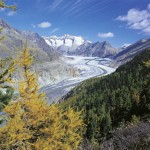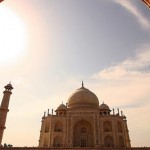Australia’s animals
Australia teems with native animals, many which are found only here.
Our Landscape
A wide, brown land
Australia is the sixth largest country in the world. It’s about the same size as the 48 mainland states of the USA and 50 per cent larger than Europe, but has the lowest population density in the world – only two people per square kilometre.
Beach paradise
Australia’s coastline stretches almost 50,000 kilometres and is linked by over 10,000 beaches, more than any other country in the world. More than 85 per cent of Australians live within 50 kilometres of the coast, making it an integral part of our laid-back lifestyle.
Our island home
Australia is the only nation to govern an entire continent and its outlying islands. The mainland is the largest island and the world’s smallest, flattest continent.
Our exports
Opals in our eyes
Australia produces 95 per cent of the world’s precious opals and 99 per cent of its black opals. The world’s opal capital is the quirky underground town of Coober Pedy in South Australia. The world’s largest opal, weighing 5.27 kilograms, was found here in 1990.
Gold galore
Kalgoorlie in Western Australia is Australia’s largest producer of gold. It also embraces the world’s largest political electorate, covering a mammoth 2.2 million square kilometres.
Merinos and cattle calls
Australia’s 85.7 million sheep (mostly merinos) produce most of the world’s wool. With 25.4 million head of cattle, Australia is also the world’s largest exporter of beef.
Our Record-Breakers
Natural legends
Queensland’s Great Barrier Reef is home to the world’s largest oyster, weighing up to 3 kilograms, while the world’s longest earthworm, stretching up to 4 metres, is found in Gippsland in Victoria. The heaviest crab, weighing up to 14 kilograms, is found in Bass Strait near Tasmania. Australia’s tallest mountain is Mt Kosciuszko, which is 2,228 metres above sea level.
Longest road, rail and fence
The world’s longest piece of straight railway track stretches 478 kilometres across South Australia’s vast, treeless Nullarbor Plain. Australia’s longest stretch of straight road – 148 kilometres – is on the Eyre Highway in Western Australia. It’s just a tiny portion of the 2,700 kilometre sealed road that takes travellers from Perth to Adelaide. The world’s longest continuous fence – the dingo fence – was built to keep sheep safe from Australia’s native dog and runs for 5,531 kilometres through central Queensland and South Australia.
Our Flora and Fauna
A hopping icon
The iconic kangaroo is unique to Australia and one of our most easily recognised mammals. There are an estimated 40 million kangaroos in Australia, more than when Australia was first settled.
Unique wildlife
Australia developed a unique fauna when it broke away from the super-continent Gondwana more than 50 million years ago. Today Australia is home to a wealth of wildlife not found anywhere else in the world. We have around 800 species of birds, half of which are unique to this country. Our marine environments contain more than 4,000 fish varieties and tens of thousands of species of invertebrates, plants and micro-organisms. About 80 per cent of Australia’s southern marine species are found nowhere else in the world.
Flourishing flora
Australia also supports at least 25,000 species of plants, compared to 17,500 in Europe. That includes living fossils like the Wollemi pine and the grass tree, and brilliant wildflowers. There are over 12,000 species in Western Australia alone!
Our People and Culture
An ethnic melting pot
Since 1945 more than six million people from across the world have come to Australia to live. Today, more than 20 per cent of Australians are foreign born and more than 40 per cent are of mixed cultural origin. In our homes we speak 226 languages – after English, the most popular are Italian, Greek, Cantonese and Arabic.
Big country, big ideas
Australians invented notepads (1902), the surf lifesaving reel (1906), aspirin (1915), the pacemaker (1926), penicillin (1940) the Hills Hoist clothesline (1946), the plastic disposable syringe (1949), the wine cask (1965), the bionic ear (1978), dual-flush toilet flush (1980) anti-counterfeiting technology for banknotes (1992) and long-wearing contact lenses (1999).
Aboriginal advances
Believed to be the world’s oldest civilization, Aboriginal people have lived and thrived on this continent for more than 50,000 years. Aboriginal societies made many unique advances long before the Europeans arrived. They invented the aerodynamic boomerang and a type of spear thrower called the woomera. They were also the first society to ground edges on stone cutting tools and the first to use stone tools to grind seeds, everyday tools developed only much later by other societies.


